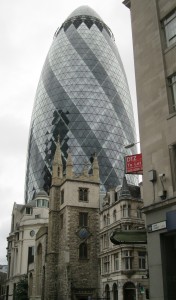Walking the Route of Anne Boleyn’s Coronation Procession
By Zoe Bramley
At around 17:00 on Saturday 31st May, a fine spring evening, Anne Boleyn emerged from the Tower of London where she had been comfortably lodged since Thursday. She was dressed in the French fashion, ‘filmy white, with a coronet of gold’ (Ives, p177) and her loose dark hair flowed luxuriously down to waist length. She rode in a litter drawn by two palfreys – small dainty horses – draped in white damask.
For the citizens of London, this was their first glimpse of the woman who had changed everything, from the succession to the way they worshipped. For Anne, the coronation procession was her first glimpse of the City and her citizens. Some reports say she had a lukewarm reception with sullen crowds failing to remove their caps and Anne complaining to Henry with the words, ‘Sir, I liked the city well enough but I saw a great many caps on heads, and heard but few tongues.’ Ives believes the crowds were ‘more curious than either welcoming or hostile’ (p 178) and he gives little credit to hostile reports. Whatever the truth, one can only imagine how Anne felt that May evening as she began her journey through the crowded, noisome streets. Was she nervous, joyful, defiant, or proud? A mixture of emotions is likely. But it’s not within the realms of fantasy to imagine her breathing a sigh of relief as the procession cleared the City boundaries at Temple Bar and continued on its way to Westminster where she would finally be crowned.
So what do we mean by the City? Well, being the oldest part of London it’s a magical place. For a history buff with a keen sense of the past it’s difficult not to feel a shiver as you wander around the winding lanes and streets, literally following in the footsteps of all those who have gone before us – right back to the Romans who founded London in 50 AD. It’s thanks to the Romans that the City is nicknamed ‘The Square Mile’ because it was they who first surrounded London with a great wall which made up approximately one square mile. The City of Henry VIII’s reign was mostly confined to that small area with a huge population of approximately 100,000 people.
Traditionally the City is the centre of business and finance, still dominated by trade guilds and livery companies which elect the Lord Mayor annually. Anne Boleyn’s coronation procession was significant because monarchs did not (and do not!) enter the City uninvited. Since the days of William the Conqueror, the City has retained its independence from Royal interference. Anne’s passage through the streets was therefore an occasion to ‘show’ herself to the people.
This guide is intended to help you retrace her progress through the City of London, allowing you to follow the same streets and get an idea of what Anne saw on the day. Although the City still has its basic medieval street plan, it is much changed today due to disasters such as the Great Fire of London and the Blitz. Therefore, as you walk the route (or read it!) imagine how much narrower the streets were in 1533 and how much darker it would have been with the overhanging roofs blocking the sunlight. Think also of the how the ground was sprinkled with grit to stop the horses slipping and imagine beautiful timber framed buildings adorned with tapestries, carpets and fine cloth.
Tower Hill – As you exit Tower Hill Station you will see the great Norman fortress over the road to your left. Anne Boleyn arrived at the Tower on Thursday 29th May after sailing down the Thames from Greenwich in a lavishly decorated barge. During her 48 hour stay, eighteen courtiers were made Knights of the Bath, including Francis Weston who was later destroyed along with Anne when her enemies struck in 1536.
Walk straight ahead into Trinity Gardens and follow the stone pathway on your left. It will bring you the site of the Tower Hill scaffold with a poignant plaque remembering those who died there. Sir Thomas More and Bishop Fisher are named but curiously absent are George Boleyn, Francis Weston, Sir William Brereton, Sir Henry Norris and Mark Smeaton who also lost their lives at this spot.
But this was three years into the future and Anne would have had no sense of impending disaster as her procession skirted Tower Hill on its way to Fenchurch Street. Continue along the path and exit the garden through the gate at the top of the gardens, crossing the road onto Coopers Row. Walk down into Crutched Friars (named for the monastery) and then go up Lloyds Avenue until you reach Fenchurch Street.
Fenchurch Street – Fenchurch Street was probably named for the fen or moor it was built upon and the church (St Gabriels) which stood there until the Great Fire of 1666. St Gabriels was situated in the middle of the road and Anne’s procession stopped here for the first entertainment of the day. Built up against the Eastern wall of the church was a tableau designed to celebrate Anne’s French links and her friendship with France. The tableau included children dressed as merchants who welcomed Anne to the City in both English and French. Interestingly, the procession was headed by twelve servants belonging to the French ambassador Jean de Dinteville who is depicted in Holbein’s masterpiece The Ambassadors. It was a huge complement to France to be featured so prominently – not to mention a snub to the Emperor!
After enjoying the tableau, the procession split around the church and continued on its way down Fenchurch Street, Anne’s scarlet clad ladies riding along behind their mistress.
Continue down until you reach the corner of Fenchurch and Gracechurch Street.
Gracechurch Street – In Saxon times it was known as Grass Church Street after the corn market which was held here. By the 16th Century however, it was sometimes known as Gracious Street. And it was here that Anne was faced with her first reminder of her reasons to be gracious – and grateful.
She was six months pregnant. An exhausting time for any woman perhaps, but for Anne, carrying within her belly all the hopes and expectations of king and country, the next tableau reminded her of the enormous responsibility.
On the corner of Fenchurch and Gracechurch Street she was shown a tableau designed by Holbein. No words were spoken but the meaning would have been very clear to the pregnant queen as she read the Latin verses held aloft by actors representing the classical figures of Calliope, Apollo and the muses of art and learning.
Anna comes, the most famous woman in all the world,
Anna comes, the shining incarnation of chastity,
In snow white litter, just like the goddesses,
Anna the queen is here, the preservation of your future.
No pressure then!
The group was seated upon a model of Mount Parnassus and its sacred fountain. Above Apollo’s head there was an eagle, which the Imperial ambassador Eustace Chapuys believed had been placed there by the German Hanse merchants (who paid for it) as a malicious reminder of the Emperor, Charles V. But Eric Ives (p 226) reminds us that the Emperor’s eagle was two headed and that ‘according to the classical story the eagle was blinded by Apollo’s brilliance – hardly a compliment to Charles V!’ Whatever the truth, we can imagine the eagle being quite lost on ordinary Londoners as they tucked into all the free Rhenish wine pouring from the fountain.
Turn right up Gracechurch Street and continue on until you reach the entrance to Leadenhall Market on the right hand side.
Leadenhall
There has been a market on this site since the 14th Century. The earliest market (and the one Anne would have seen) was a large stone building with a lead roof. Hence the name Leadenhall! Today’s market is a wonderful piece of Victoriana designed by Sir Horace Jones in 1880.
With her pregnancy advancing and the whole court eagerly expecting a male heir, the next tableau was designed to reinforce the message. Backing onto the entrance of Leadenhall Market, Anne saw an open castle painted inside with clouds, angels and cherubs. Seated on top of a green hillock within the castle were figures representing St Anne (the mother of the Virgin Mary) and her descendants, including Jesus.
The message was clear. Anne the queen would rival the maternal success of Anne the saint.
For a Tudor detour, walk straight through the cobbled street of the market and out the other end, passing Lord Rogers’ Lloyds Building on your left. Follow the curvature of the street round to the left and cross Leadenhall Street to the little stone church of St Andrew Undershaft. Built in 1522, this little church miraculously survived the Great Fire of London and the Blitz. Its strange name comes from the fact that it was constructed next to a huge maypole which dwarfed the church. St Andrew was quite literally under the shaft!
Retrace your steps to the entrance of Leadenhall and cross Gracechurch Street, turning left onto Cornhill.
The name Cornhill continues the reference to the corn market which was probably centred around Leadenhall. From the picture (taken on a quiet Sunday morning) you can see how today it’s a modern city street but which hides a labyrinth of ancient alleyways to its left.
Tucked away in a little alleyway just off Cornhill (Corbet Court) you will find this interesting lady . She is a ‘Mercer’s Maiden’ and this is the badge, or symbol of the Mercer’s Company, the richest of the City Livery Companies. Anne’s great grandfather was a member of the Mercer’s Company. Geoffrey Boleyn became Lord Mayor in 1457 and was knighted by Henry VI. He seems to have been a fair minded individual – on two occasions during his mayorality he allowed people to forgo their jury service on the grounds of ill health or age. But he could also be firm – he once had to order a fishmonger to burn his wooden bowls because they were sappy and ruined the fish!
But back to Cornhill. In Anne’s day there was a conduit here which carried water down from the springs in the hills above London. It was at the conduit that the next tableau was staged. Figures representing the Three Graces waited to greet the queen, each announcing themselves as ‘Glad Heart’, ‘Stable Honour’, and ‘Continual Success.’
As she processed down this scarlet and crimson draped street, I imagine Anne nodding her thanks to the Three Graces and enjoying a moment of quiet pride in her achievements so far.
Continue down Cornhill, crossing Bank Junction and turn right onto Cheapside.
Cheapside
In Anne’s day, Cheapside was the widest of the City streets and the focus of pageants, public gatherings, and of course coronation processions. It was also a major shopping centre, the word Cheap coming from the old English word for market. As you walk down Cheapside, look out for the names of the little streets and alleyways running off it which remind us of the commodities on sale here; Milk Street, Bread Street and Honey Lane are a few examples.

A frieze showing the coronation processions of Edward VI, Elizabeth I, Charles II and Queen Victoria. This detail shows Elizabeth in her litter.
Standing at the Eastern end of Cheapside you will see a big, modernist red brick building on your left. This is Number One Poultry and was completed in the late 1990’s but incorporates an interesting frieze showing the coronation processions of Edward VI, Elizabeth I, Charles II and Queen Victoria. This detail shows Elizabeth in her litter.
For Anne’s coronation procession, the buildings were draped in a magnificent display of cloth of gold and velvet. She was greeted by all the livery companies standing on one side of the street and the general citizens on the other.
Opposite Honey Lane she was treated to Latin speeches and music; static displays and heraldic devices. She then moved to the Eleanor Cross which was located opposite the church of St Mary le Bow, where the Aldermen presented her with a gold purse containing 1000 marks.
For a detour, step into the entrance of Ironmonger Lane and see more examples of Mercer’s Maidens at the Mercer’s Hall. Continue up the winding lane and cross Gresham Street into Guildhall Yard. The imposing Gothic Great Hall standing before you is where the Lord Mayors have been sworn into office every year since it was built in 1430. Geoffrey Boleyn would have been very familiar with it!
Retrace your steps and continue down Cheapside, turning left onto New Change and cross the road onto Carter Lane. St Paul’s Cathedral is now in front of you to the North.
St Paul’s
Carter Lane is named for the carters who dropped their passengers off at the many coaching inns which lined this long, winding lane. The paved area in the centre of Carter Lane demonstrates how narrow it was and how congested it would have been! The lane backed onto St Paul’s churchyard and somewhere around here, Anne saw her next entertainment.
At one of the gates to the churchyard, she saw an empty throne mounted high, ready for its new occupant. Three elaborately dressed women waited below, the central figure holding aloft the cheerful message, ‘come my love, thou shalt be crowned.’
The watching crowd was thrown wafers bearing the words, ‘Queen Anne, when thou shalt bear a new son of the king’s blood, there shall be a golden world unto thy people.’
It’s at this point that we get a touching insight into Anne’s mood on this special day. After watching a sweet display of 200 children reciting Latin poems to their new queen, she said ‘Amen’ with a ‘joyful, smiling face.’ (Ives, p228.)
For an interesting detour, continue down Carter Lane for 200 yards until you reach the gloomy looking alleyway called Church Entry on your left. Walk down the hill to the bottom and turn left again until you see the little ruined churchyard. Walk up the steps and see the dilapidated old stonework near the entrance. This formed part of a church located in the centre of the Blackfriars monastery which played host to Katherine of Aragon’s divorce hearing in 1529. This courageous woman famously addressed Henry VIII directly, throwing herself to her knees with the plea, ‘Alas! Wherein have I offended you, or what occasion of displeasure have I deserved?’
The monastery housed around 400 monks who were presumably pensioned off when it was dissolved in 1538. The building was sold off piecemeal and if you retrace your steps back into Playhouse Yard, you will be standing roughly where Shakespeare’s company operated their famous indoor Blackfriars playhouse in the monks’ refectory.
Anne Boleyn’s procession continued down Fleet Street and out of the City through Temple Bar on its way to Westminster. She would have had no inkling of the tragedy that lay ahead of her, but for those of us who admire the courage and intelligence of the woman who ‘set our country in a roar’, it’s a comfort to know that she always remained true to herself and to her firmly held beliefs.
Read more about Anne Boleyn’s coronation here.




















Thankyou for a very informative and entertaining guide to Anne Boleyn’s Coronation Procession. As someone who is interested in toponymy, I particularly appreciated the information regarding the meaning of the names of the streets she passed through. Well done.
Thanks Peter, I’m so glad you liked it! I find the origins of street names fascinating because they tell us so much
Wonderful article, TY!!! Printing it out so someday,( I SO DO HOPE!!!), when I do get to England, I can follow Anne’s route that day
That’s great, Joy! I’m glad to know you’ll find it useful when you come over!
Thank you Zoe, that was brilliant. I was reading whilst on my lunchbreak and I forgot where I was! I look forward to doing the walk in person one day soon, I would love to do it in costume, but that maybe a step too far!
phew!! it tired me out just reading about the procession, Anne must have been exhausted, with her beening six monthes pregnant…
Great to see how the streets of London have changed over the centuries, or too much in some cases, wonderful artical.
Hi Zoe
Thankyou for a fascinating article. I shall hope to do this trail myself. I would recommend that anyone who does the trail could also take a copy of John Stow’s Survey of London with them too. This would add to the knowledge one will gain from following this guide too, and also get the sense of what Elizabethan London may have been like aesthetically and socially. Once again, many thanks.
Great, informative piece. I, too, will try to follow it when I get to London one of these days! Thanks!
Very enjoyable article!!
What a lovely description of the route. Could easily imagine ‘being there’!! Thank you.